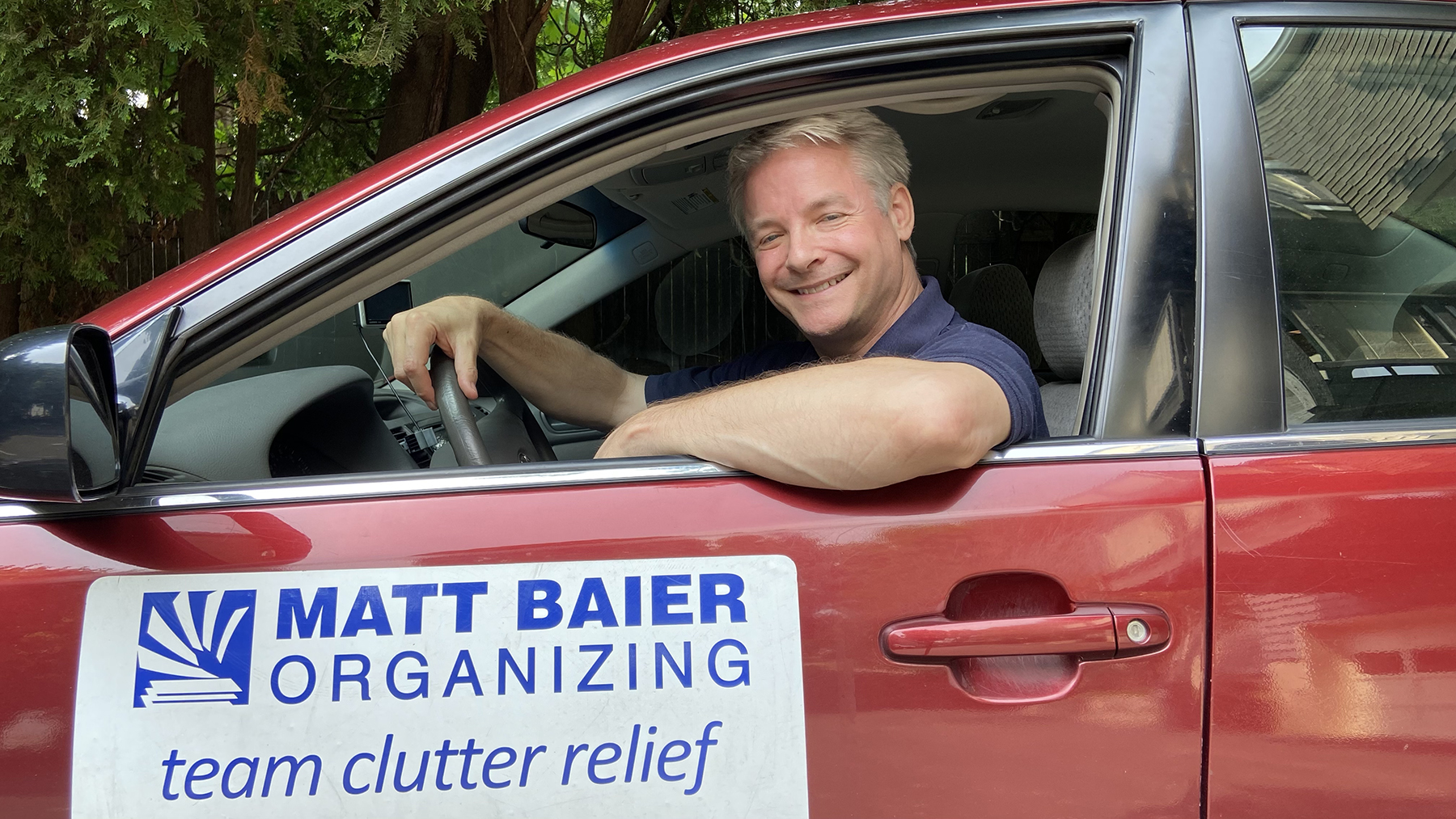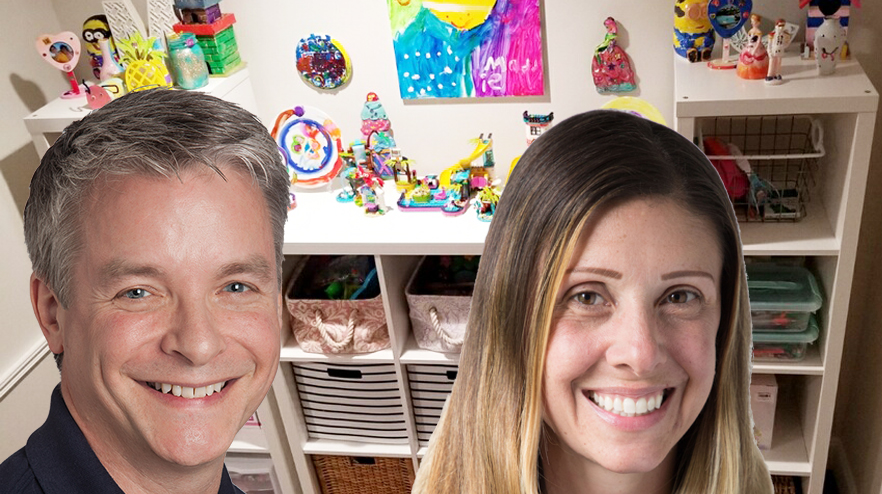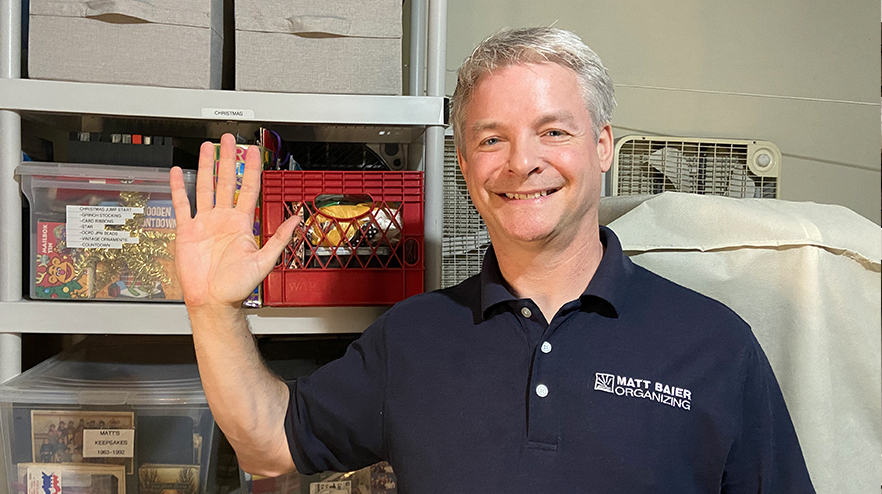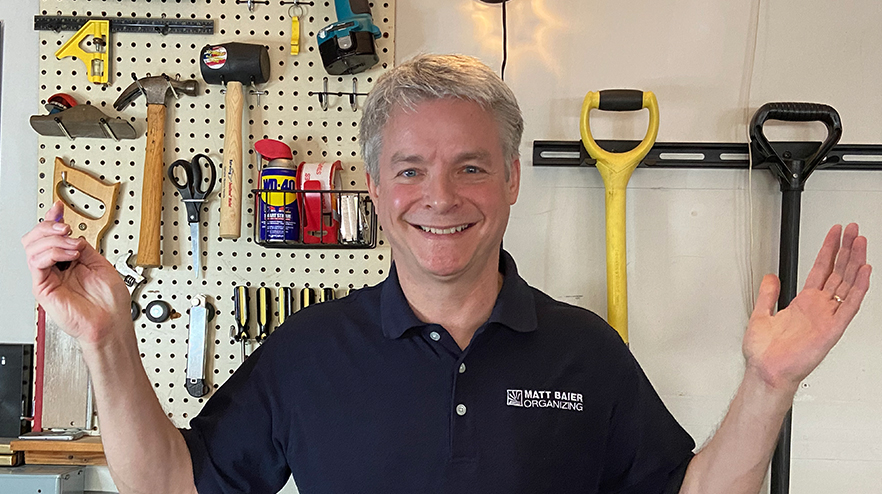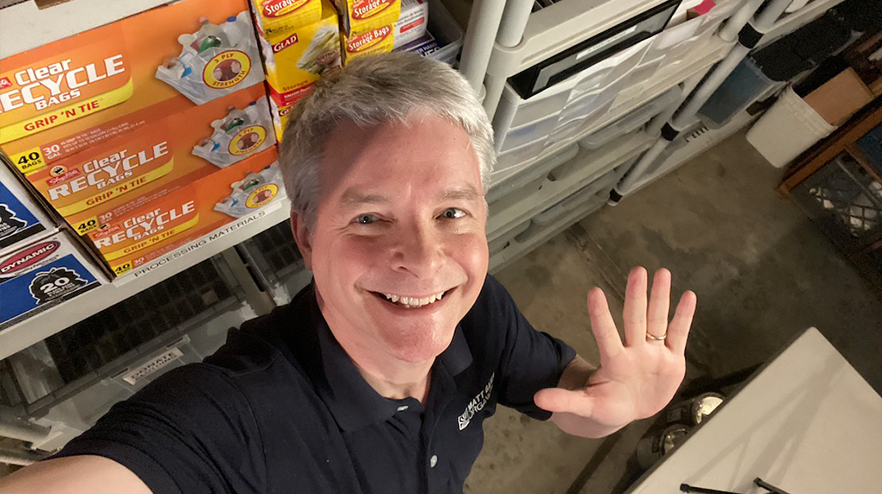The most important things to understand about organizing your next steps is to recognize that organizing has steps. Effective, sustainable organizing has to involve more than just grab-an-object-and-store-it. Before you figure out where something should go, you should sort by category and review by priority. By addressing one step at a time, you have a singular focus. When you have a singular focus, you can move faster AND you make the next step easier.
Because organizing in steps is so important, it is necessary to always think ahead. How is the decision that you are making now, making your next step easier? Even if the next step is for someone else, you will serve yourself better by making it easy. However, most of the time that next step belongs to you. So remember that and make it as easy on yourself as you can. If possible, find a way to make it almost fun. When it’s fun it gets done.
Following are 4 examples of how to make your next organizing steps easier.
1. establish exit zones
If you are taking on a big decluttering project, always begin by establishing exit zones. At a minimum, you will need discard, donate, and sell zones. You may want to add a give-to zone for items that have a particular recipient(s) in mind. If you are clearing your home to sell, there are other exit zones you may want to add. These may include a storage zone and a keep-to-move zone. A keep-to-move zone is for items that you will move to your new home, but won’t show well in this one. An attic is often a good place to keep these.
The garage is usually best for discards and donates, because it facilitates hauling away. To begin a major decluttering without exit zones is to deny that the excess has to go somewhere. Clearly defined exit zones create a scoreboard, so you know exactly where you stand on next steps.
2. categorize keeps
As for items-to-keep, always categorize, to make progress. Don’t overthink it, but make general categories. Some common categories include office supplies, books, keepsakes, decor, utility, and loose paper. When you get clear on why you keep an item, it takes you to where it should go. For example, office supplies may go to the home office, utility goes to garage, books to library, etc. “Keep” is not a category. It does nothing to make your next step easier.
3. define to-do’s
Most of us recognize that if we don’t write down a to-do, we are liable to forget it. So if you are good at writing down tasks, that’s great! However, that may well not be enough to get your to-dos to done. Again, you increase your odds of staying organized by making your next step easy. I write each task on a 1.5 x 2 Post-it note. Why? It’s Because the size of the Post-it limits the size of the task. That makes it manageable and reliable.
I like to Clarify the action with a letter in the upper left. For example, I use E for email, C for call, W for write, and G for Google. That way I can quickly group my tasks. In the lower right corner I write a number, indicating the time I expect the task to take. A neatly written, clearly defined task stands a much better chance of completion than a scribble on a napkin. Action feeds on clarity.
4. set launch pad
To stay organized, one of the most critical areas in the home is just inside the front door. Reserve a small table, shelf, or ledge for items heading out the door. In my home, I have a ledge, which we call the “leaving ledge.” NOTHING goes there except items heading out the door. This is not a place for things to pile up. It may hold an article of clothing going to the donation depot or a shopping bag going to the car.
It may be a letter heading out to the mailbox. Whatever it is, it is easily manageable and ready to go. I make it very obvious, often sticking out at an awkward angle, like a sore thumb. That way, it grabs my attention, as I head out the door. A neat little pile would look settled and comfortable, so it takes up residence. That’s not good. Your exit item should look uncomfortable and ready to move to the next step, outside the door.
Sorting and prioritizing without a plan for your next steps, will not move you forward. Working in steps is vital to good organizing, but be sure you are making your next steps super easy. Assume that YOU will be the one doing the next steps and give yourself a break!
Please Share With Your Community









